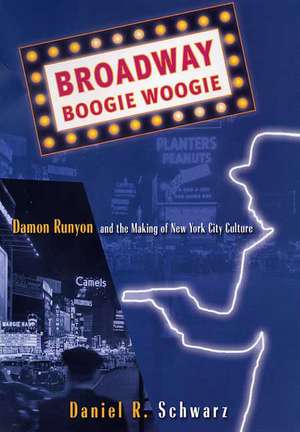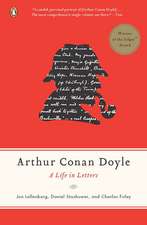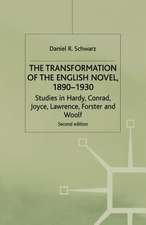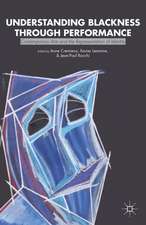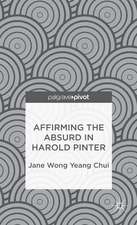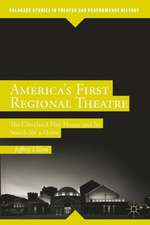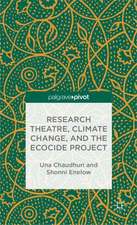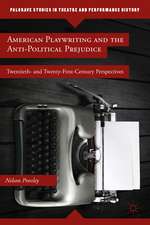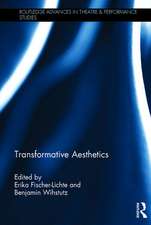Broadway Boogie Woogie: Damon Runyon and the Making of New York City Culture
Autor D. Schwarzen Limba Engleză Hardback – 9 mai 2003
| Toate formatele și edițiile | Preț | Express |
|---|---|---|
| Paperback (1) | 383.50 lei 43-57 zile | |
| Palgrave Macmillan US – 9 mai 2003 | 383.50 lei 43-57 zile | |
| Hardback (1) | 392.37 lei 43-57 zile | |
| Palgrave Macmillan US – 9 mai 2003 | 392.37 lei 43-57 zile |
Preț: 392.37 lei
Nou
Puncte Express: 589
Preț estimativ în valută:
75.08€ • 78.60$ • 62.12£
75.08€ • 78.60$ • 62.12£
Carte tipărită la comandă
Livrare economică 07-21 aprilie
Preluare comenzi: 021 569.72.76
Specificații
ISBN-13: 9780312239480
ISBN-10: 0312239483
Pagini: 356
Ilustrații: VI, 346 p.
Dimensiuni: 140 x 216 x 32 mm
Greutate: 0.52 kg
Ediția:2003
Editura: Palgrave Macmillan US
Colecția Palgrave Macmillan
Locul publicării:New York, United States
ISBN-10: 0312239483
Pagini: 356
Ilustrații: VI, 346 p.
Dimensiuni: 140 x 216 x 32 mm
Greutate: 0.52 kg
Ediția:2003
Editura: Palgrave Macmillan US
Colecția Palgrave Macmillan
Locul publicării:New York, United States
Cuprins
Introduction Runyon's New York: Historical Contexts and Fictional Universe The Eyes and Ears of the City: Runyon's Collected Journalism Runyon's Trial Reporting and the Spectator Culture The Art and Artistry of Runyon's Fiction 5Noir and Sentiment: The Genres of Runyon's Fiction (I) Gangsters, Gamblers, and the Demi-monde: The Genres of Runyon's Fiction (II) The Turps: Domesticity in Brooklyn
Recenzii
'Runyon exerted infulence far beyond writing a story and had an enormous impact on popular culture in America. Recommended...' - Katherine E. Merrill, Library Journal
''Runyonese' evoke[s] a perhaps mythical Manhatten occupied by amusing, sometimes violent or greedy perps.' - James Boylan, Columbia Journalism Review
'If you love anything to do with the history of New York City, Dan Schwarz has written just the book for you. Broadway Boogie Woogie: Damon Runyon and the Making of New York City Culture is a fascinating look at the gritty nether world in which writer Damon Runyon lived and worked...Between the two world wars, Runyon wrote from an insider's view of the city's underbelly. The high-rollers, the glitzy nightlife, the underworld characters, the palookas he wrote about transfixed his readers much as the gory photogravure tabloid shots by crime photographer 'Weegee' (Arthur Fellig) who could find 'beauty' even at a murder scene.' - Monica Finch, Union College
'Schwarz's book shows how Runyon captured - and in some ways created - the sights and sounds of New York City in the first half of the twentieth century. [According to Schwarz], 'To read Runyon is to read New York City history between 1910 and 1946...His trial reporting had much to do with creating the spectator culture.' One of the best chapters in the book deals with that topic. Among the trials Runyon covered was the ordeal of Bruno Richard Hauptmann, who was convicted in the 1932 kidnapping and death of Charles A. Lindbergh, Jr., the 20-months son of Charles and Anne Lindbergh. Runyon, whose short story 'The Idyll of Sarah Brown', became the hit Broadway musical 'Guys and Dolls', could provide both [entertainment and information].'
'Schwarz revels in describing the impact and style of Runyon, who was one of the two most important, and hard-working, columnists in America from the 1920s until his death in 1946. The other was Walter Winchell...Runyon's impact was widespread...'
'Runyon was tailor-made for New York City, which he draped with memorable characters, such as Harry the Horse, Sky Masterson, Dave the Dude, and Apple Annie. Runyon was a good listener, Schwarz says. That allowed him to absorb the tone of the times. According to Schwarz, 'Runyon understood that...talk is performance...He told people what New York was about.' That meant, primarily, show business, crime, and politics.'
'The focus on Runyon is an apt vehicle for Schwarz's larger goal of writing a book about the culture of New York City.' - Frank Heron, The Syracuse Post-Standard
'Moving from one work to the next, Schwarz...summarizes and discusses the vast oeuvre of Damon Runyon's fiction. Emphasis is given to the recurring motifs of gambling, vaudeville, and street sensibilities. The roots of these subjects in Runyon's own life and the influence of his representation of New York City on later writers are important themes.' - Reference & Research Book News
'...thought-provoking examination of Runyon and his historical context.' - T. D. Beal, Choice
''Runyonese' evoke[s] a perhaps mythical Manhatten occupied by amusing, sometimes violent or greedy perps.' - James Boylan, Columbia Journalism Review
'If you love anything to do with the history of New York City, Dan Schwarz has written just the book for you. Broadway Boogie Woogie: Damon Runyon and the Making of New York City Culture is a fascinating look at the gritty nether world in which writer Damon Runyon lived and worked...Between the two world wars, Runyon wrote from an insider's view of the city's underbelly. The high-rollers, the glitzy nightlife, the underworld characters, the palookas he wrote about transfixed his readers much as the gory photogravure tabloid shots by crime photographer 'Weegee' (Arthur Fellig) who could find 'beauty' even at a murder scene.' - Monica Finch, Union College
'Schwarz's book shows how Runyon captured - and in some ways created - the sights and sounds of New York City in the first half of the twentieth century. [According to Schwarz], 'To read Runyon is to read New York City history between 1910 and 1946...His trial reporting had much to do with creating the spectator culture.' One of the best chapters in the book deals with that topic. Among the trials Runyon covered was the ordeal of Bruno Richard Hauptmann, who was convicted in the 1932 kidnapping and death of Charles A. Lindbergh, Jr., the 20-months son of Charles and Anne Lindbergh. Runyon, whose short story 'The Idyll of Sarah Brown', became the hit Broadway musical 'Guys and Dolls', could provide both [entertainment and information].'
'Schwarz revels in describing the impact and style of Runyon, who was one of the two most important, and hard-working, columnists in America from the 1920s until his death in 1946. The other was Walter Winchell...Runyon's impact was widespread...'
'Runyon was tailor-made for New York City, which he draped with memorable characters, such as Harry the Horse, Sky Masterson, Dave the Dude, and Apple Annie. Runyon was a good listener, Schwarz says. That allowed him to absorb the tone of the times. According to Schwarz, 'Runyon understood that...talk is performance...He told people what New York was about.' That meant, primarily, show business, crime, and politics.'
'The focus on Runyon is an apt vehicle for Schwarz's larger goal of writing a book about the culture of New York City.' - Frank Heron, The Syracuse Post-Standard
'Moving from one work to the next, Schwarz...summarizes and discusses the vast oeuvre of Damon Runyon's fiction. Emphasis is given to the recurring motifs of gambling, vaudeville, and street sensibilities. The roots of these subjects in Runyon's own life and the influence of his representation of New York City on later writers are important themes.' - Reference & Research Book News
'...thought-provoking examination of Runyon and his historical context.' - T. D. Beal, Choice
Notă biografică
DANIEL R. SCHWARZ is Professor of English and Stephen H. Weiss Presidential Fellow at Cornell University, where he has taught since 1968. He has received Cornell's College of Arts and Sciences Russell award for distinguished teaching. He is the author of the widely read Imagining the Holocaust (1999). His most recent book is Rereading Conrad (2001). His prior books include Reconfiguring Modernism: Explorations in the Relationship Between Modern Art and Modern Literature (1997), Narrative and Representation in Wallace Stevens (1993), The Case for a Humanistic Poetics (1991), The Transformation of the English Novel, 1890-1930 (1989; revised 1995) Reading Joyce's 'Ulysses' (1987); The Humanistic Heritage: Critical Theories of the English Novel from James to Hillis Miller (1986); Conrad: The Later Fiction (1982); Conrad: 'Almayer's Folly' through 'Under Western Eyes' (1980); and Disraeli's Fiction (1979). He has edited The Dead (1994) and The Secret Sharer (1997) in the Bedford Case Studies in Contemporary Criticism Series, and is co-editor of Narrative and Culture (1994). He has directed nine NEH seminars, and has lectured widely in the United States and abroad.
